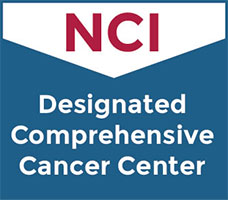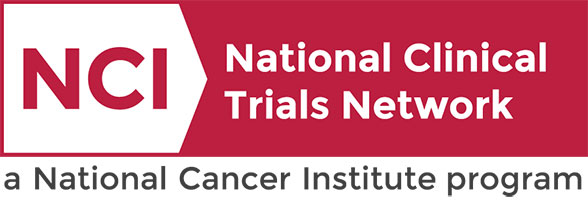Clinical Trials Search at Vanderbilt-Ingram Cancer Center
Accelerated or Standard BEP Chemotherapy in Treating Patients with Intermediate or Poor-Risk Metastatic Germ Cell Tumors
Germ Cell (Pediatrics)
Germ Cell (Pediatrics)
This phase III trial compares the effect of an accelerated schedule of bleomycin sulfate, etoposide phosphate, and cisplatin (BEP) chemotherapy to the standard schedule of BEP chemotherapy for the treatment of patients with intermediate or poor-risk germ cell tumors that have spread to other places in the body (metastatic). Drugs used in chemotherapy, such as bleomycin sulfate, etoposide phosphate, and cisplatin, work in different ways to stop the growth of tumor cells, either by killing the cells, by stopping them from dividing, or by stopping them from spreading. Giving BEP chemotherapy on a faster, or accelerated schedule may work better with fewer side effects in treating patients with intermediate or poor-risk metastatic germ cell tumors compared to the standard schedule.
Germ Cell (Pediatrics)
III
Borinstein, Scott
NCT02582697
COGAGCT1532
Evaluating the Addition of the Immunotherapy Drug Atezolizumab to Standard Chemotherapy Treatment for Advanced or Metastatic Neuroendocrine Carcinomas That Originate Outside the Lung
Neuroendocrine
Neuroendocrine
This phase II/III trial compares the effect of immunotherapy with atezolizumab in combination with standard chemotherapy with a platinum drug (cisplatin or carboplatin) and etoposide versus standard therapy alone for the treatment of poorly differentiated extrapulmonary (originated outside the lung) neuroendocrine cancer that may have spread from where it first started to nearby tissue, lymph nodes, or distant parts of the body (advanced) or that has spread from where it first started (primary site) to other places in the body (metastatic). The other aim of this trial is to compare using atezolizumab just at the beginning of treatment versus continuing it beyond the initial treatment. Immunotherapy with monoclonal antibodies, such as atezolizumab, may help the body's immune system attack the cancer, and may interfere with the ability of tumor cells to grow and spread. Cisplatin and carboplatin are in a class of medications known as platinum-containing compounds that work by killing, stopping or slowing the growth of cancer cells. Etoposide is in a class of medications known as podophyllotoxin derivatives. It blocks a certain enzyme needed for cell division and DNA repair, and it may kill cancer cells. Giving atezolizumab in combination with a platinum drug (cisplatin or carboplatin) and etoposide may work better in treating patients with poorly differentiated extrapulmonary neuroendocrine cancer compared to standard therapy with a platinum drug (cisplatin or carboplatin) and etoposide alone.
Neuroendocrine
II/III
Ramirez, Robert
NCT05058651
SWOGGIS2012
Open-Label Umbrella Study To Evaluate Safety And Efficacy Of Elacestrant In Various Combination In Patients With Metastatic Breast Cancer
Breast
Breast
This is a multicenter, Phase 1b/2 trial. The phase 1b part of the trial aims to determine the
RP2D of elacestrant when administered in combination with alpelisib, everolimus, palbociclib,
and ribociclib. The Phase 2 part of the trial will evaluate the efficacy and safety of the
various combinations in patients with ER+/HER2- advanced/metastatic breast cancer.
RP2D of elacestrant when administered in combination with alpelisib, everolimus, palbociclib,
and ribociclib. The Phase 2 part of the trial will evaluate the efficacy and safety of the
various combinations in patients with ER+/HER2- advanced/metastatic breast cancer.
Breast
I/II
Rexer, Brent
NCT05563220
VICC-DTBRE23166P
Study of INBRX-109 in Conventional Chondrosarcoma
Sarcoma
Sarcoma
Randomized, blinded, placebo-controlled, Phase 2 study of INBRX-109 in unresectable or
metastatic conventional chondrosarcoma patients.
metastatic conventional chondrosarcoma patients.
Sarcoma
II
Davis, Elizabeth
NCT04950075
VICCSAR2165
CRISPR-Edited Allogeneic Anti-CD19 CAR-T Cell Therapy for Relapsed/Refractory B Cell Non-Hodgkin Lymphoma (ANTLER)
Multiple Cancer Types
CB010A is a study evaluating safety, emerging efficacy, pharmacokinetics and immunogenicity
of CB-010 in adults with relapsed/refractory B cell non-Hodgkin lymphoma after
lymphodepletion consisting of cyclophosphamide and fludarabine.
of CB-010 in adults with relapsed/refractory B cell non-Hodgkin lymphoma after
lymphodepletion consisting of cyclophosphamide and fludarabine.
Lymphoma,
Phase I
I
Oluwole, Olalekan
NCT04637763
VICC-DTCTT23155P
Hormonal Therapy after Pertuzumab and Trastuzumab for the Treatment of Hormone Receptor Positive, HER2 Positive Breast Cancer, the ADEPT study
Breast
Breast
This phase II trial studies the effect of hormonal therapy given after (adjuvant) combination pertuzumab/trastuzumab in treating patients with hormone receptor positive, HER2 positive breast cancer. The drugs trastuzumab and pertuzumab are both monoclonal antibodies, which are disease-fighting proteins made by cloned immune cells. Estrogen can cause the growth of breast cancer cells. Hormonal therapy, such as letrozole, anastrozole, exemestane, and tamoxifen, block the use of estrogen by the tumor cells. Giving hormonal therapy after pertuzumab and trastuzumab may kill any remaining tumor cells in patients with breast cancer.
Breast
II
Abramson, Vandana
NCT04569747
VICCBRE2243
Tiragolumab and Atezolizumab for the Treatment of Relapsed or Refractory SMARCB1 or SMARCA4 Deficient Tumors
Pediatrics
Pediatrics
This phase I/II trial studies how well tiragolumab and atezolizumab works when given to children and adults with SMARCB1 or SMARCA4 deficient tumors that that has either come back (relapsed) or does not respond to therapy (refractory). SMARCB1 or SMARCA4 deficiency means that tumor cells are missing the SMARCB1 and SMARCA4 genes, seen with some aggressive cancers that are typically hard to treat. Immunotherapy with monoclonal antibodies, such as tiragolumab and atezolizumab, may help the body's immune system attack the cancer, and may interfere with the ability of tumor cells to grow and spread.
Pediatrics
I/II
Borinstein, Scott
NCT05286801
COGPEPN2121
Testing the Use of Combination Therapy in Adult Patients with Newly Diagnosed Multiple Myeloma, the EQUATE Trial
Multiple Myeloma
Multiple Myeloma
This phase III trial compares the combination of four drugs (daratumumab-hyaluronidase, bortezomib, lenalidomide and dexamethasone) to the use of a three-drug combination (daratumumab-hyaluronidase, lenalidomide and dexamethasone) in patients with newly diagnosed multiple myeloma. Bortezomib may stop the growth of cancer cells by blocking some of the enzymes needed for cell growth. Chemotherapy drugs, such as lenalidomide, work in different ways to stop the growth of cancer cells, either by killing the cells, by stopping them from dividing, or by stopping them from spreading. Daratumumab-hyaluronidase is a monoclonal antibody that may interfere with the ability of cancer cells to grow and spread. Anti-inflammatory drugs, such as dexamethasone lower the bodys immune response and are used with other drugs in the treatment of some types of cancer. Adding bortezomib to daratumumab-hyaluronidase, lenalidomide, and dexamethasone may be more effective in shrinking the cancer or preventing it from returning, compared to continuing on a combination of daratumumab-hyaluronidase, lenalidomide, and dexamethasone in patients with newly diagnosed multiple myeloma.
Multiple Myeloma
III
Baljevic, Muhamed
NCT04566328
ECOGPCLEAA181
Chemotherapy for the Treatment of Patients with Newly Diagnosed Very Low-Risk and Low Risk Fusion Negative Rhabdomyosarcoma
Pediatrics
Pediatrics
Rhabdomyosarcoma is a type of cancer that occurs in the soft tissues in the body. This phase III trial aims to maintain excellent outcomes in patients with very low risk rhabdomyosarcoma (VLR-RMS) while decreasing the burden of therapy using treatment with 24 weeks of vincristine and dactinomycin (VA) and examines the use of centralized molecular risk stratification in the treatment of rhabdomyosarcoma. Another aim of the study it to find out how well patients with low risk rhabdomyosarcoma (LR-RMS) respond to standard chemotherapy when patients with VLR-RMS and patients who have rhabdomyosarcoma with DNA mutations get separate treatment. Finally, this study examines the effect of therapy intensification in patients who have RMS cancer with DNA mutations to see if their outcomes can be improved.
Pediatrics
III
Borinstein, Scott
NCT05304585
COGARST2032
Testing the use of Ado-Trastuzumab Emtansine Compared to the Usual Treatment (Chemotherapy with Docetaxel plus Trastuzumab) for Recurrent, Metastatic, or Unresectable HER2-Positive Salivary Gland Cancer
Head/Neck
Head/Neck
This phase II trial compares the effect of usual treatment of docetaxel chemotherapy plus trastuzumab, to ado-emtansine (T-DM1) in patients with HER2-positive salivary gland cancer that has come back (recurrent), that has spread from where it first started (primary site) to other places in the body, or cannot be removed by surgery (unresectable). Trastuzumab is a form of targeted therapy because it works by attaching itself to specific molecules (receptors) on the surface of cancer cells, known as HER2 receptors. When trastuzumab attaches to HER2 receptors, the signals that tell the cells to grow are blocked and the cancer cell may be marked for destruction by body's immune system. Trastuzumab emtansine contains trastuzumab, linked to a chemotherapy drug called emtansine. Trastuzumab attaches to HER2 positive cancer cells in a targeted way and delivers emtansine to kill them. Docetaxel is in a class of medications called taxanes. It stops cancer cells from growing and dividing and may kill them. Trastuzumab emtansine may work better compared to usual treatment of chemotherapy with docetaxel and trastuzumab in treating patients with recurrent, metastatic or unresectable salivary gland cancer.
Head/Neck
II
Choe, Jennifer
NCT05408845
NRGHN010


